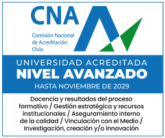Microalgae biomass is an adsorbent of special interest for heavy metal removal due to the large number of functional groups on their surface that provide excellent removal yields. A previous work of this research team showed that growing Chorella vulgaris under light and nitrogen limitation resulted in significant differences in terms of functional group composition and cadmium adsorption. This work expanded on previous results by delving into the mechanisms and the thermodynamic behavior of cadmium adsorption using C. vulgaris cells with different cell wall coverage by comparing adsorption kinetics, equilibrium isotherms, and energy levels. The results showed that a combination of physical mechanisms, such as hydrogen bonds, and chemical interactions dominated adsorption in the light-deprived cells. The kinetic tests showed a faster equilibrium and lower activation energy. Thermodynamic parameters showed a favorable spontaneity and a relatively low reaction energy. The process seems to be slightly endothermic, as higher temperatures favor adsorption in this case. In contrast, chemical interactions mediated by ion exchange predominated in the nitrogen-deprived microalgae, with deacetylated amino groups seemingly playing a key role. Adsorption is slower and requires higher amounts of energy. Spontaneity and equilibrium decrease at higher temperature and the process was clearly exothermic.
These results provide deeper insights into the mechanisms of heavy metal adsorption using microalgae cells with modified coverage, an important advance in the field of biosorption and heavy metal removal that opens up novel lines of research with great potential for the industrial application of this technology.



